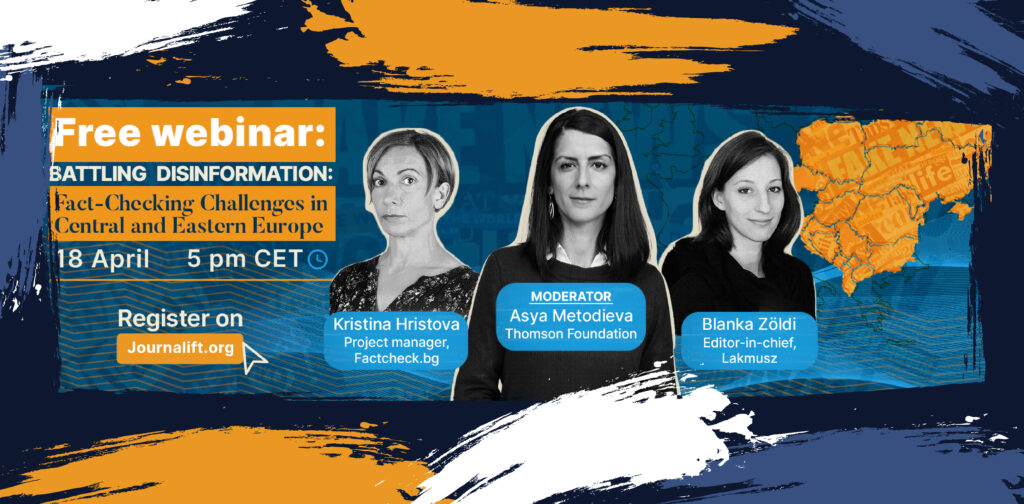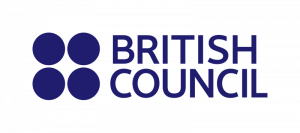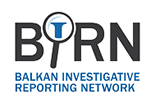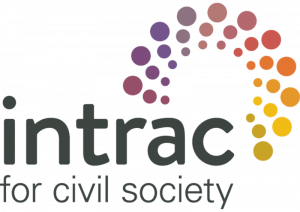At every meeting, on every training that I hold, people always ask me how to reach the right audience and I always answer with this question – who is your audience? Usually, they reply with “everyone” because in their opinion everyone reads the news. I always joke with the answer and I reply with “oh, so you are Coca-Cola – they target everyone – everywhere”!
So, to make my point, everyone, be it a business or a media organization has to define their target audience for their brand/product/service. While it can be a challenging task, it's essential today to utilize all the analytical tools at your disposal to build an accurate target audience.
Newsrooms need to define their “Business Objectives” before building an online presence. To do so, newsrooms must define clear goals for each social media channel to ensure the right audience is reached.
Define the Business Goal of your newsroom

So, let’s say you decide you want to increase your online presence on all social media channels. Based on the latest trends, that is where the audience is spending most of their online time. Before doing anything else, you have to define the specific outcomes you want to reach.
So first you have to:
- Identify and evaluate the organization's resources for managing social media. Do you have in-house expertise and the tools to create content for each channel?
- Define objectives - what do you want to achieve with your online presence? Here are some most common business objectives:
- Brand Awareness – let people know what topics you are covering, and why should they trust you, why should they read your content and engage with you
- Readership – your goal is to increase traffic to the website on specific categories or topics
- Reach specific demographics or a specific audience, with the content you produce
- Revenue goal - increasing subscriptions to news articles or selling advertising space
- Engagement - improving engagement with the audience on social media channels
- Donor or Project objectives – some media have these types of objectives.
When you read the list, you got the feeling that all of them are important. I agree. But if you try to achieve all those goals at the same time, you will fail. Especially if you are a small team organization.
It is important to know that only you can define what is important for your newsroom. And you need to let others know about that - your social media team, donors, partners, or your management.
For each business objective, you can set specific KPIs to track the progress and impact of the work you do. If you have defined the goals, it will be easier to do the next part, which is to define the audience.
How to Identify the target audience

There are different tools that you can use to define the audience. I personally start by defining a target persona. Social media offers a personalized experience, so it needs to feel that way also with your content. You can deliver the right content, to the right people on the platform and on the format they consume the most.
In marketing and advertising, a persona is a fictional representation of a target audience member that is created to help an organization better understand and connect with its readers. A persona is created by analyzing and synthesizing data about the target audience, including their demographics, behavior patterns, motivations, and pain points.
A persona typically includes a name, age, job title, location, interests, goals, challenges, and preferred communication channels. For example, a news organization may create a persona of a 40-year-old working mother who is interested in local news and prefers to receive news updates via social media.
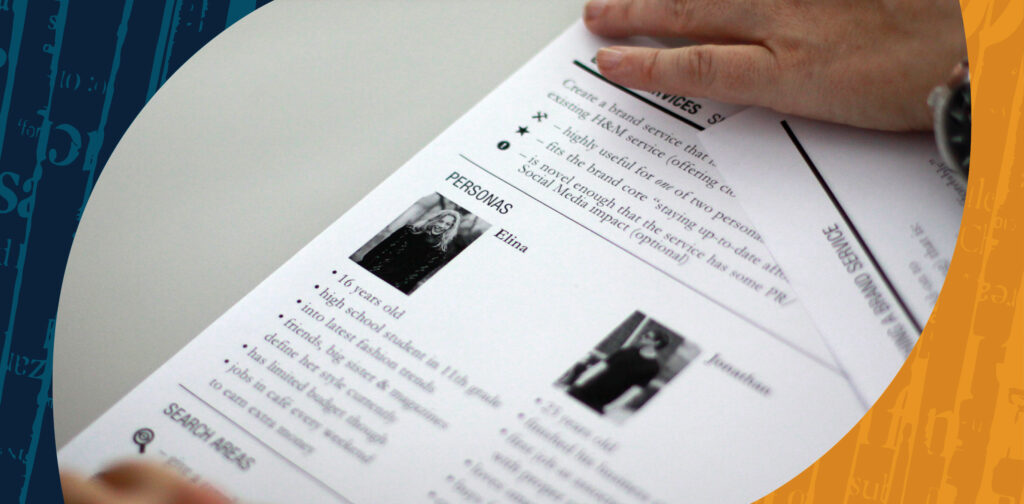
I know what you are thinking, that you are in a “storytelling business” and not in a “storyselling business”. I know, but bear with me.
After you define your audience, you then can identify which platforms they use to get their news from. By their demographics, you will know if they use Facebook or Instagram or Twitter or even TikTok.
For example, if you want to reach millennials, you will know that Facebook and Twitter are the platforms to go, but if you want to reach Generation Z (young audience), then that means you have to go to Instagram, Snapchat and TikTok to distribute your content.
It's important to note that personas are not meant to represent individual people, but rather a group of people who share similar characteristics and behaviors. Personas are also not static and should be regularly updated based on new data and insights about the target audience you have.
You can use tools like Google Analytics, Facebook Insights, Instagram Insights, Google trends etc. to identify your audience and identify trends on specific topics.
How to use these tools?

Google Analytics could be used to read the data on website traffic and this way you can have a better understanding of your audience. It is a very powerful tool. Some ways your newsroom can use GA to identify reading behaviors are:
- Source of the traffic: You can identify the source of the traffic, and this will help you identify the social platform that brings you the most traffic. This way you know where to focus more.
- Time on page: this provides data on how long readers stay on a particular page/news article. This can help the newsroom understand which articles are keeping readers engaged and which ones are not. Social media editors can use this information to adjust their content strategy and create more engaging content for social media channels.
- Analyze pageviews from social media channels: Pageviews can help the editors understand which articles are popular among readers. By analyzing which pages receive the most traffic, the newsroom can gain insights into what topics and types of content are resonating with its audience on different social media channels.
- Analyze search terms: GA provides data on the search terms that readers use to find content on the website. The newsroom can use this information to understand what topics and keywords are popular among readers and to optimize its content to improve search engine rankings (SEO) or re-distribute them on social media channels.
- GA can generate demographic data about website visitors from social media channels only. This data can be valuable for social media editors and journalist to understand their audience better and optimize their online presence and distribution accordingly. It can also help to target specific demographics with advertising campaigns and improve the user experience for different groups of readers. GA generates a wide range of demographic data, such as:
- Age
- Gender
- Interests
- Location (country, city, region)
- Language
- Device (desktop, mobile, tablet)
- Browser used.
- Operating system used.
- Service provider
- Network domain
When you get the big picture of who and when, and where reads your content, it will become easier to target them or create more relevant content based on their behavior.
Another tool that will help you understand your audience is Facebook Insights and Audience Insights and that’s what we are about to talk next. (https://www.facebook.com/business/insights/tools/audience-insights)
Facebook Insights: Social Media Editor's best tool

Your newsroom team can use Facebook Insights to gain valuable insights into their audience, engagement levels, and the performance of their content on the META platform.
- Demographic data: Facebook Insights provides data on the age, gender, location, and language of the newsroom's audience (followers). This information can be used to create content that resonates with specific demographics and to target ads to specific audiences.
- Engagement data: Find out how many people are engaging with the newsroom's content and how they are engaging. This includes metrics such as likes, comments, shares, and clicks. Newsrooms can use this information to identify which types of content are resonating with their audience and to adjust their content strategy accordingly. Or find out what is not working and fix it by changing the title, photo or copy.
- Posting Schedule: You can find out more by checking the best preforming posts based on the time they have been distributed. This way you will understand your audience's behavior and schedule content accordingly.
With the new Meta Business manager, the insight section has a lot of valuable information that you can follow and act upon the results.
Audience Insights: Planning and identifying your potential audience
One of my favorite tools is Audience Insights. After you have defined the audience (Persona) for your newsroom you can come here and check how big is that audience on the META platform (Facebook and Instagram). You can filter your audience based on age, location, interests, and gender and see how big is that audience, and what pages they follow.
Let’s say that your biggest target audience is people who live in the capital cities of Balkan, and they are 25-30 years old, speak English and are interested in breaking news, politics, and diplomacy.
As a result, we will get the potential audience size, gender distribution and distributed by city, so we have a sense of how big is the audience. In this case, if we have an article about “Southeast Europe Digital Diplomacy situation”, then this would be the most likely audience that would consume/engage with the content. So, now you can target this audience and if you spend, for example, 10 euros on promotion, you will be reaching approximately 10% of this audience and that would be enough to spark engagement. And if you have used the right social media copy and image and scheduled it at the right time, you should see some results, even if you have 1% engagement you will generate enough signals for the algorithm to push it more to the relevant audience, by suggesting it as a content. *See fig 1.
This a small tip that you can use to deliver your content cheaply to the right people at the right time in the right context. If you use video as content, it will cost you way cheaper per engagement. I would recommend using a combination of a short video, a picture with a quote and a link to the article. So, for each news article, you should distribute it this way.
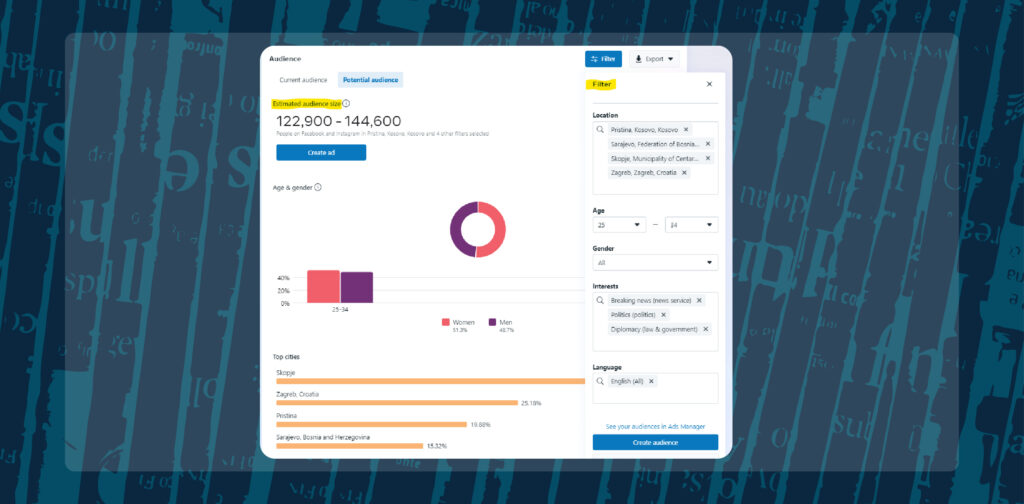
Google Trends – find out about the trending topic and search intent
People nowadays go on social media to discover content, not to search. When their intent is to find things, they go to google for search. Your newsroom can use Google Trends to gain insights into the popularity of search terms and topics over time. With the insights, you can identify topics that you can produce or re-distribute the existing content.
Here are a few ways that newsrooms can use Google Trends:
- Identify Breaking News: You can use Google Trends to identify breaking news stories. By looking at the trending searches on Google, newsrooms can identify topics that are currently popular among their audience.
- Popularity of Topics: Newsrooms can use Google Trends to monitor the popularity of topics over time. This can you identify which topics are gaining or losing popularity and adjust their content strategy or distribution strategy accordingly.
- Search Trends: Google Trends allows editors to analyze search trends by geographic location. This can help them identify regional differences in the popularity of certain topics also discover related topics that their audience may be interested in. By looking at related queries and topics, editors can identify new areas to explore in their reporting.
- Content Strategy: Newsrooms can use Google Trends to plan their content strategy. By identifying topics that are likely to be popular in the future, newsrooms can create content that is relevant and timely and then distribute it on social media channels. This way you can grab attention with relevant content and boos your organic reach.
Overall, Google Trends is a powerful tool that can help newsrooms gain insights into the interests and behaviours of their audience.
Algorithm impact on content creation

Content creators are asking themselves the same question all the time - should I create content for my audience or for the algorithm? This is a million-dollar question!
Every piece of content we create and distribute through social media channels gets checked by the algorithm for relevance, time posted, type of content, source of the content, length of the content and frequency of posting.
META’s algorithm is designed to prioritize content that is most relevant and engaging to each individual user on the platform. Your content that is relevant, timely, and engaging is more likely to be favored by the algorithm and shown to more users.
So, for you to be relevant with your content to your targeted audience, you should put into your editorial workflow the steps described in this article. Combine insights and audience behaviors on your digital assets and decide what works best for you. Then replicate that recipe to all of your content production.

















